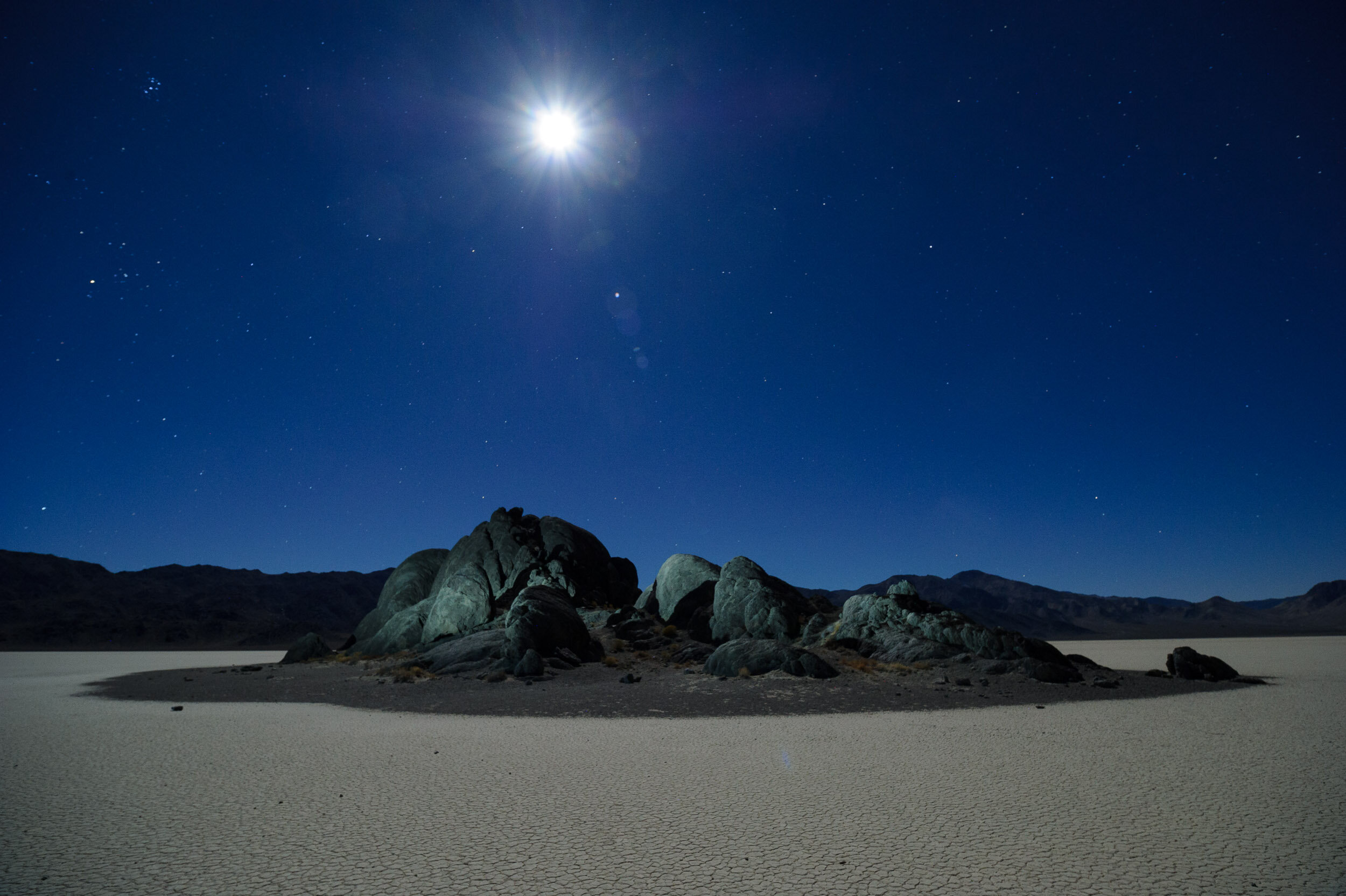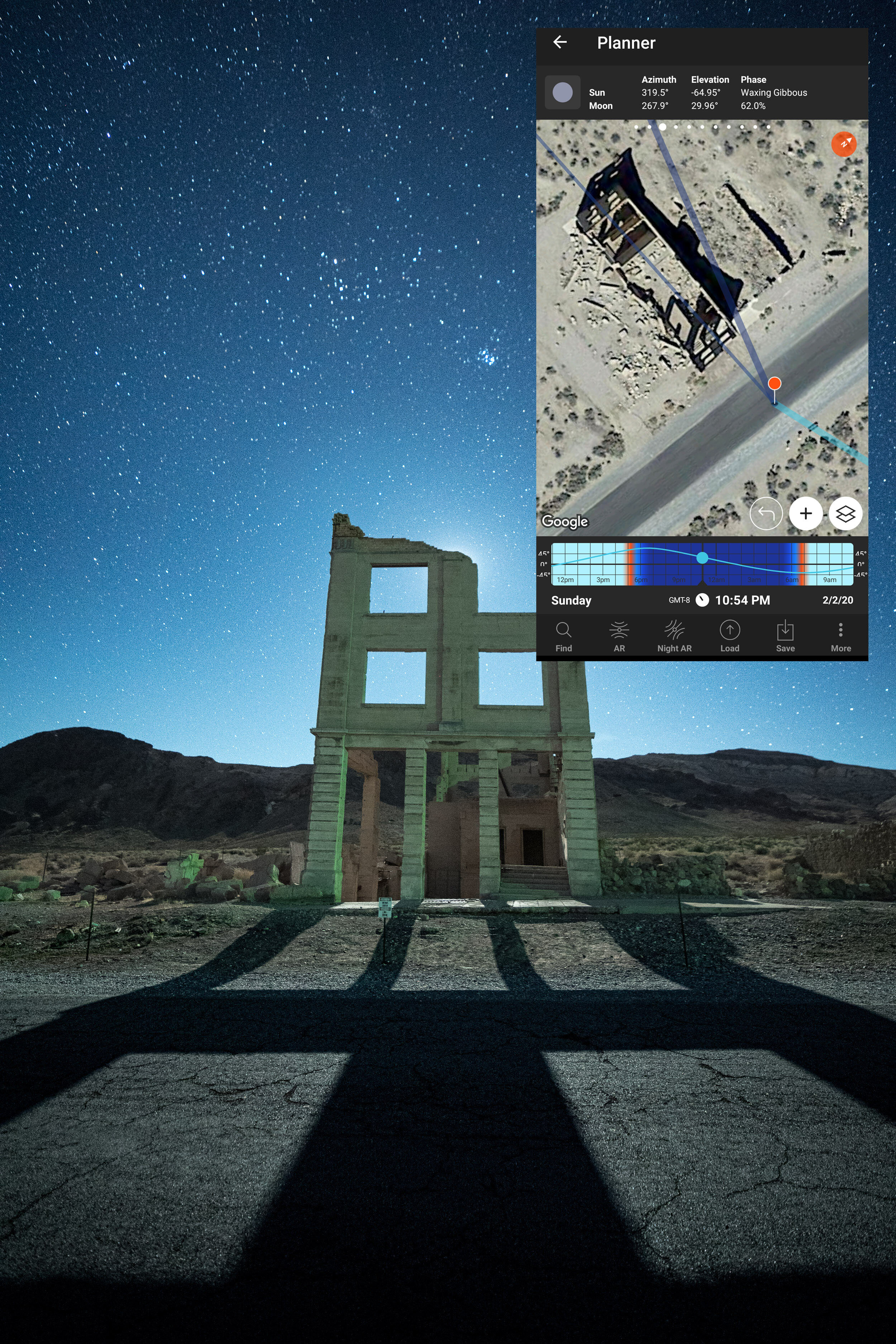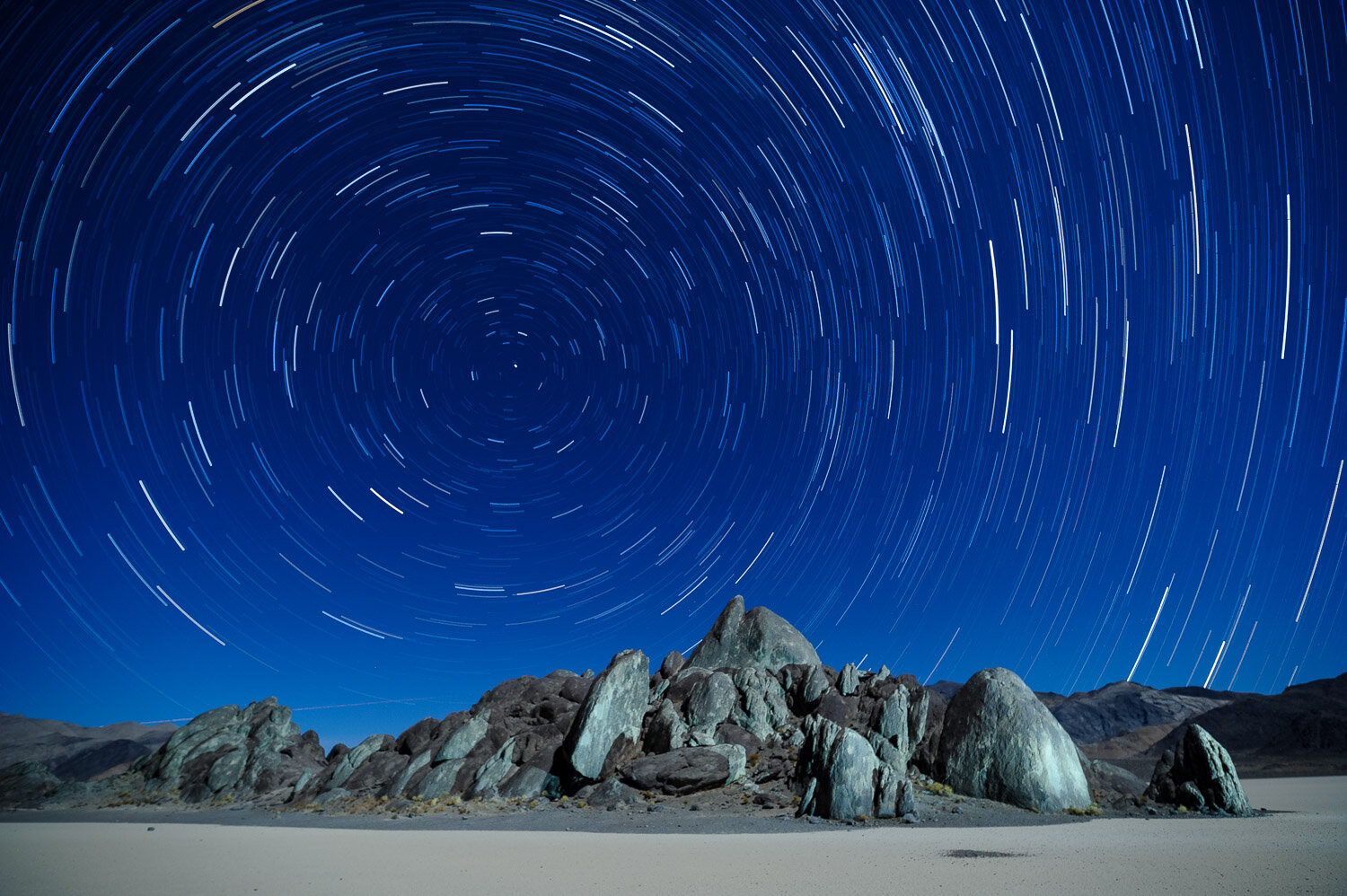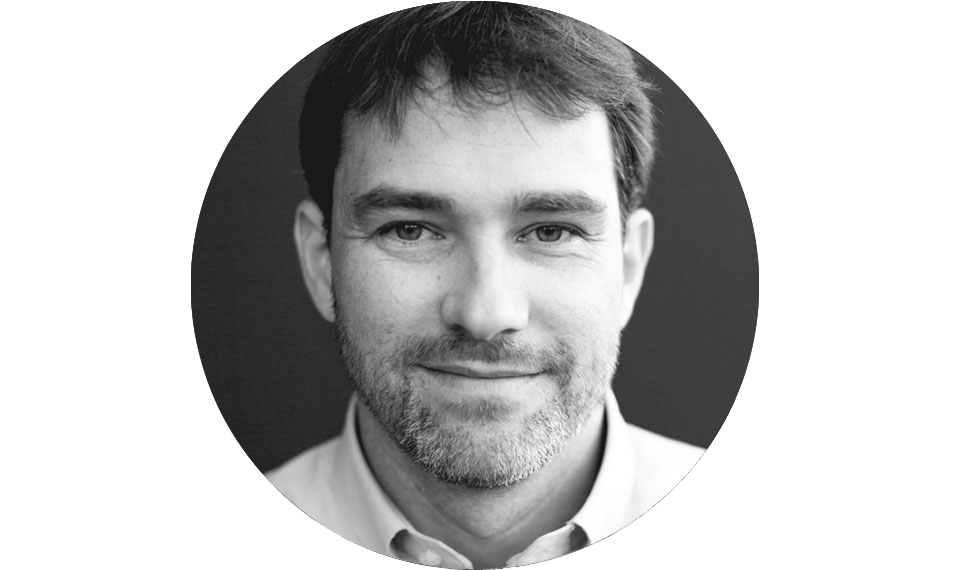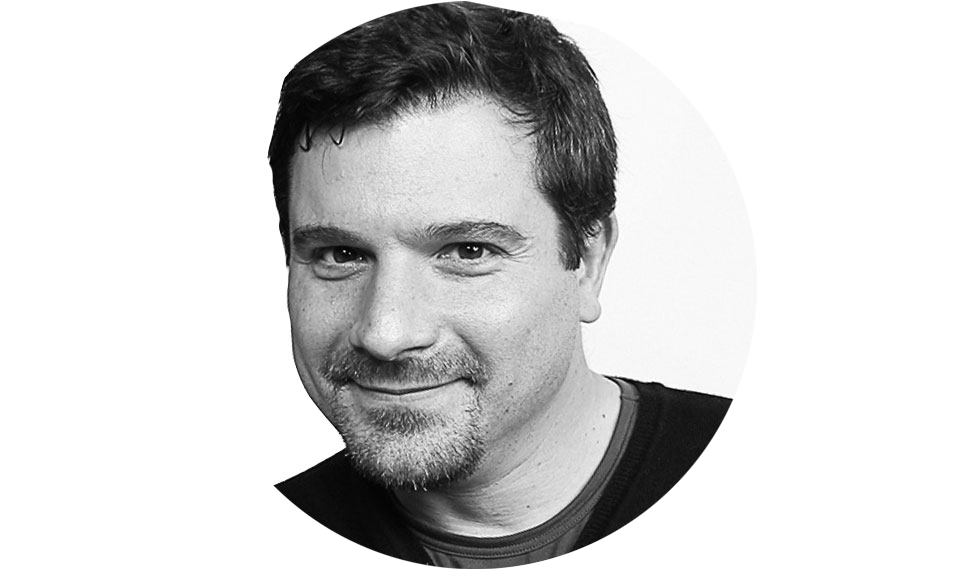PhotoPills Bootcamp: Death Valley
Long before the photograph comes the idea. And with PhotoPills, the ideas have no bounds. During five days and nights of learning, scouting and shooting in California's Death Valley National Park, we’ll explore not just the rolling sand dunes and the vast desert landscapes, but we’ll also explore the ins and outs of one of the most powerful tools a photographer can keep in their pocket. Learn to plan and capture the Milky Way, sunsets, moonrises, star points, star trails and more in this southwestern jewel of the park system.
Workshop Details
February 15-20, 2022 — Completed
This is a 5-night, 6-day workshop. Your adventure begins on the morning of Tuesday, February 15, and ends after a final slideshow on the afternoon of Sunday, February 20.
$1,995 + applicable taxes. Register below.
Skill level
Intermediate and above. Participants should have a firm grasp of the basic principles of photography and of their cameras, and have a comfortable understanding of night photography fundamentals.
Group size
14, with 2 instructors — 7:1 ratio
Info websites
Death Valley National Park
PhotoPills
Workshop Leaders
Registration
This event has passed. Thank you for your interest.
Attendee Slide Show
The Workshop Experience
This workshop is all about learning how to master PhotoPills in the best place to do so: in the field. And not just any field—we’ll be learning, scouting and shooting in one of the premier places for night photography in the United States: California’s Death Valley National Park.
Each day we’ll learn more about PhotoPills and how to use it to plan day and night photography. We’ll go over everything from how to configure the settings so the app works better for you, to how to use the Planner and other features to find and photograph the sun, moon, stars, Milky Way, etc.
Then we’ll venture into the park and use what we learned in the classroom to scout photos for sunset and nighttime, and then to execute what we learned and spend the rest of the evening shooting. Sound like fun? Yeah, we think so too!
Death Valley is a photographer’s playground. It’s the largest national park in the continental U.S., and despite being entirely desert, it’s incredibly diverse for photography. Rolling sand dunes, endless salt flats, high-desert mountains, rock formations, ghost towns and more await our cameras and lenses. Moreover, all of those will be complemented with sunsets, moonsets, dazzling starry skies, Milky Way and more.
What You Should Know
This workshop caters to knowledgeable photographers with an intermediate skill set. Participants should have a firm grasp of the basic principles of photography and of their cameras, and have a comfortable understanding of night photography fundamentals.
While we will be happy to offer advice and answer questions about both day and night photography, the workshop is focused on teaching how to use PhotoPills to plan your photographs rather than on how to shoot them.
You do not need to know anything about how to use PhotoPills before attending this workshop, but you should bring a device that is capable of running it—either a smartphone or a tablet, if not both.
If you would like to attend this workshop but are unsure whether you have adequate photography skills, we can offer pre-workshop tutoring to get you ready for your adventure with us. Alternatively or additionally, a few of us have written books that may be productive pre-workshop reads.
What You Will Learn
We will cover all of the features of PhotoPills that a landscape photographer might want to use in a natural environment. We will teach these features in a classroom setting, then we’ll venture into the field to reinforce your new skills and put them to use to plan and shoot epic photographs in the national park.
While in the field, the instructors will reinforce the classroom learning by demonstrating how they would use PhotoPills in that particular location, and then will work with participants one-on-one to make sure everyone masters the app and executes a photo they have individually planned. Our locations have generous room to explore, so everyone will be able to spread out and use PhotoPills to plan and capture their own unique visions.
Our aim is to send you home after the workshop comfortable with using this powerful photo-planning tool, as well as with some amazing photos of this inspiring place.
TOPICS COVERED WILL INCLUDE how to use PhotoPills to:
plan for specific photo locations while on or off site
locate where and when the sun and moon will rise and set
find where the Milky Way will be in the sky at different times of night
pinpoint the North Star and strategize star circles
determine exposures for the sharpest star points
calculate long exposures for star trails or light painting
determine and use hyperfocal distance for maximum depth of field
and more …
Night Conditions
Logistics & General Info
Travel
Flying into Las Vegas is how most people get to Death Valley. It’s a bit more than 2 hours from our base, but the closest airport by far, and the drive is easy and desert-scenic. We hope you’ll consider coordinating your flights and carpooling with others in the workshop. This is a great way to reduce the carbon footprint, save money, conserve resources and get to know your fellow attendees better.
You will need a rental car, and a high clearance or AWD vehicle is recommended to expand location opportunities. If you are interested in carpooling or sharing a rental car, let us know and we will try to connect you with another attendee looking for the same. You are responsible for arranging and paying for your own transportation.
Nearby Airports:
Las Vegas (LAS) — 2.25 hours from Furnace Creek
Los Angeles (LAX) — 5 hours
Palm Springs, California (PSP) — 5 hours
Lodging & Food
The facilities at Furnace Creek have recently been renovated, and we are currently working with them on a package for this workshop. Once the details have been finalized, you’ll receive an email with information about room reservations.
You are not required to stay at the official workshop lodging. There are good options for camping and RVs, but you’ll need a cold-weather sleeping bag if you’re in a tent.
We encourage eating two meals per day—a good breakfast and a great late lunch. When on the night shoots, you may wish to bring snack food or a sandwich and plenty of water.
You are responsible for arranging and paying for your own meals and accommodations.
Weather
Expect daytime highs in the 70s F, lows in the 40s. If we decide to visit the higher elevation locations, the temperatures we can expect will be as much as 40 degrees cooler than in the valley.
Recommended Attire
Jeans or trail pants and short-sleeve shirts for daytime, multiple layers of warm winter clothing for the night shoots (including a good coat or shell jacket). Comfortable and protective shoes are recommended for getting around. There won’t be long or difficult hikes, but we will be well off of the pavement, so quality trails shoes or hiking boots would be optimal.
Exertion Level
The exertion level of this workshop is Moderate. (See more about our classifications.)
No vigorous activity will be required during the workshop, but please consider your physical abilities prior to registering. There won’t be any difficult hikes, but there will be walking involved, and you should be comfortable carrying your own equipment over uneven ground in the dark.
Additional Information
Please read our FAQs section for more information about skill and gear requirements, and other information that pertains to all our workshops.
If you have questions, please contact us—we're happy to talk it over with you.
Photographing the magic ...
“Some national parks just feel special.”
In 1995 I drove cross-country with a photographer friend. As we passed through the Southern California desert, I noted that Death Valley was only about an hour off our route. We discussed the possibility of heading north to visit the national park, sorting through the pros and cons, then chose to keep heading west.
I didn't have another good opportunity to visit Death Valley again until 20 years later. When I did, it was immediately apparent that my friend and I had made a big mistake.
Some national parks just feel special. Something about what's contained within the boundaries is different enough from the surrounding areas so that you know: Yes, this land needed to be preserved. Death Valley is certainly one of those places.
Driving into to the park from any direction, you soon move from a standard desert environment into an amazing desert landscape. Rock formations, canyons and mountains all define the geological setting. With that you find colors, and salt flats, and sand dunes. A set of volcanic craters. Rocks that move across playa. A waterfall in a thriving oasis. Old primitive roads that lead to ghost towns and abandoned mines.
The space is beautiful, and the things that fill the space are wondrous.
Yes. My friend and I surely made a mistake. But I've rectified that. Since my first visit to Death Valley, I've returned half a dozen more times. Always exploring. Always photographing the magic.


